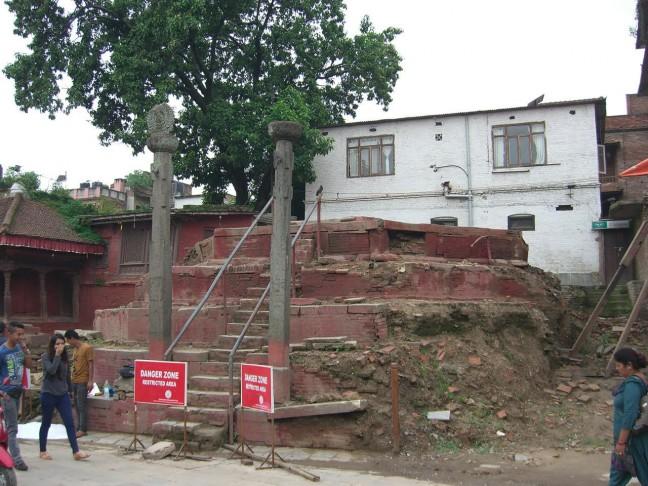University of Wisconsin professor Gudrun Bühnemann conducts research in Nepal annually, but after two major earthquakes, her work was done under challenging limitations this past summer.
Starting at a young age with childhood dreams of living in India, Bühnemann was always interested in travel and adventure. She made that dream a reality when she lived in India for ten years from 1980 to 1990. Continuing her travels, she lived in Japan for three years doing postdoctoral research in Buddhism at the University of Nagoya and University of Kyoto before coming to UW.
Bühnemann works on Sanskrit texts and images. She’s interested in representations of divinities, gods and goddesses and how they relate to texts.

Bühnemann began visiting Nepal in 1979 and making annual trips since 2000 and said she finds the idiosyncrasy of her research fascinating.
But she faced major challenges conducting her research when she arrived in Nepal last July, after a historic earthquake severely damaged much of the region — and captured the world’s attention — in April of this year.
Bühnemann said the damage was not as bad as the media had made it seem in Kathmandu Valley, Nepal’s geographic and cultural capital. The first reports she received indicated 60 percent of buildings were damaged, but Bühnemann said that number was exaggerated, and the earthquake only damaged about 30 percent of buildings.
“It will realistically take five to 10 years to rebuild,” Bühnemann said. “Some buildings were completely destroyed and some were partially destroyed. For others, it wasn’t clear and some were blocked off.”

In past years, Bühnemann said she studied sculptures at the royal palace of Patan and at the Hanumandhoka Royal Palace in Kathmandu. But due to the damage from the earthquakes, she was unable to enter the severely damaged palace in the capital. The city of Bhaktapur took extensive damage to private property, which also meant the city’s museum was partially closed.
Bühnemann initially had appointments with Nepali scholars to discuss her work, but was unable to because of the museum closures. Her resources were limited, but Bühnemann said she was able to make connections with scholars in the Patan museum, where she was able to gain access to damaged artifacts that were being stored in the museum. She was also able to access a storage area in Bhaktapur where sculptures from destroyed temples are kept.
“It was very disappointing to go there and find out everything wasn’t open,” Bühnemann said. “I was only there for two weeks, but I usually stay longer. I wasn’t sure what the situation would be and I felt it might be a big risk for me, so I didn’t want to stay too long.”
While she was there she experienced an earthquake in the night that registered at a 4.0 on the Richter scale.
Bühnemann is currently working on a book documenting and analyzing the iconography of the late Malla period in Nepal, she hopes to study the Sanskrit texts she collected throughout the rest of the year. Despite the current damage, Bühnemann said she hopes to return to Nepal next summer.
A previous version of this article captioned the second photo “Ruins of the Trailokyamohan Narayan Temple in Kathmandu”. It has been updated to read “Homes in Bhaktapur destroyed by the earthquake.” The Badger Herald regrets this error.


